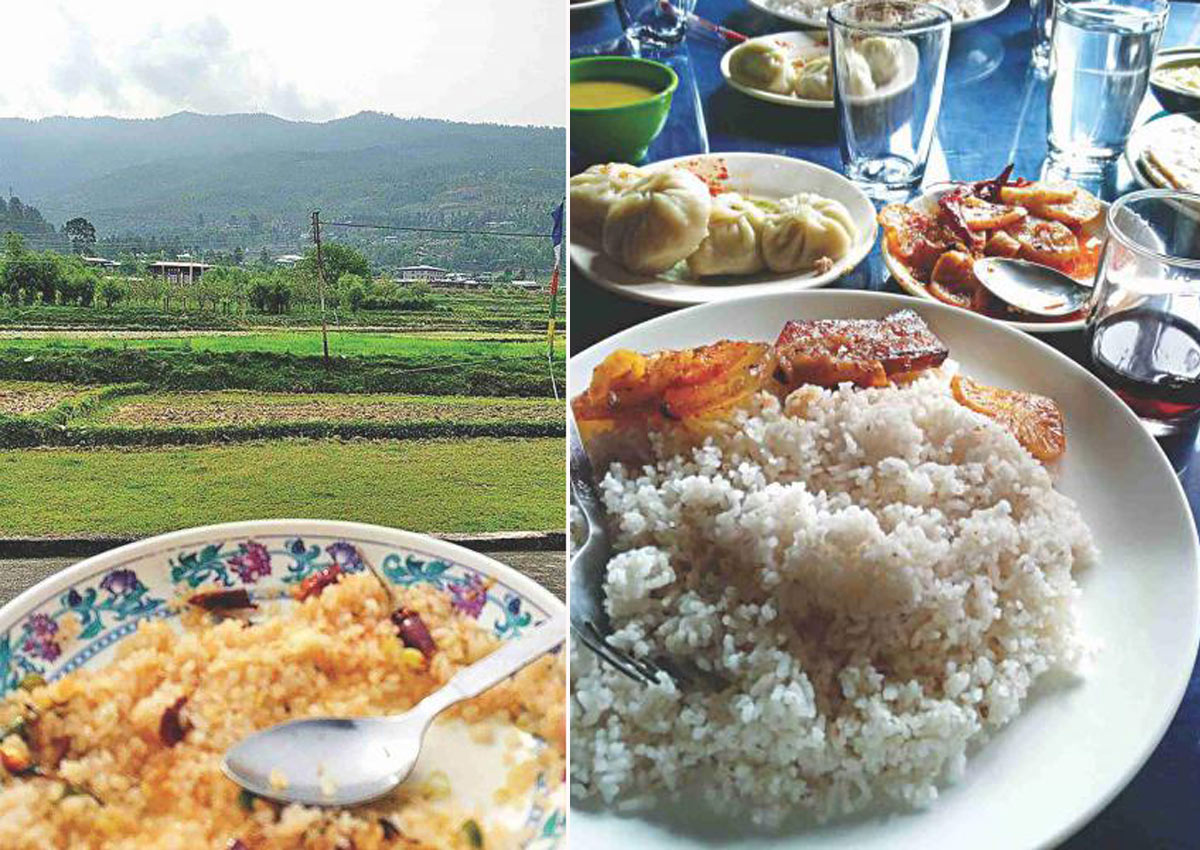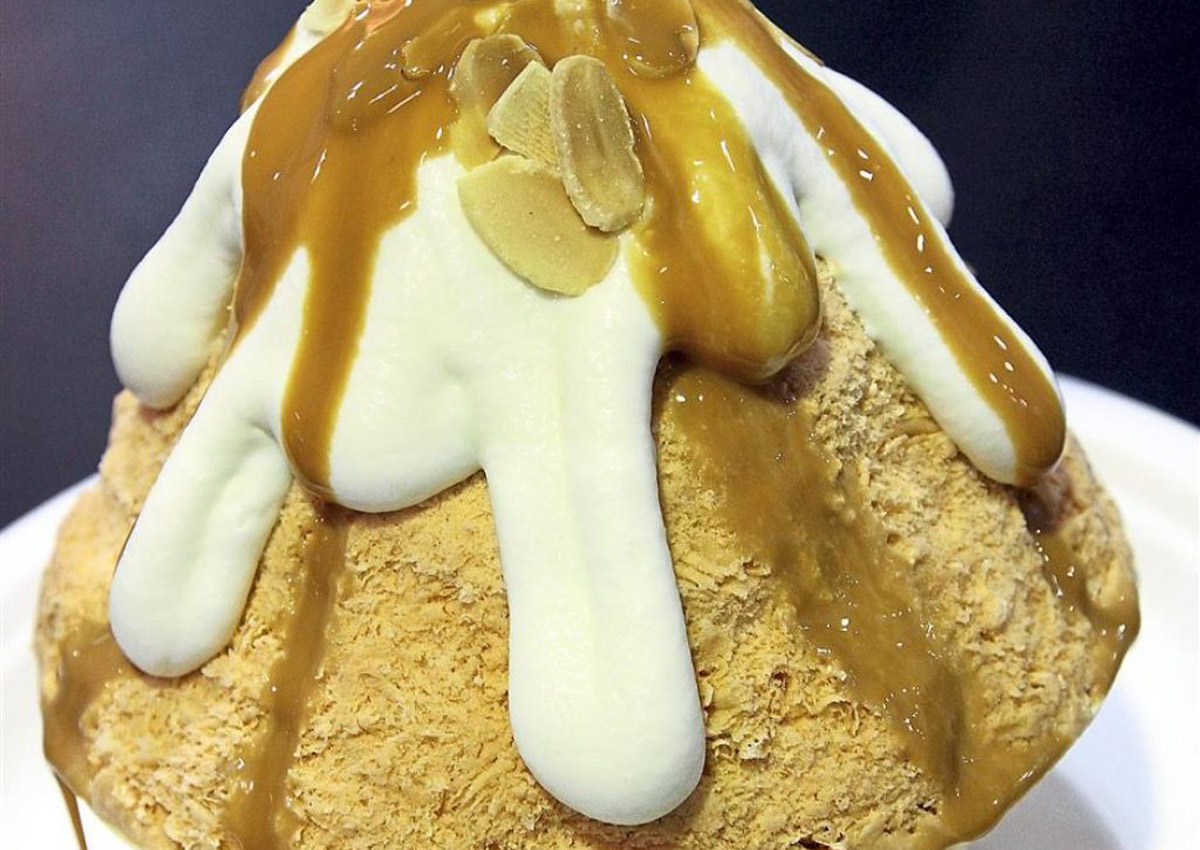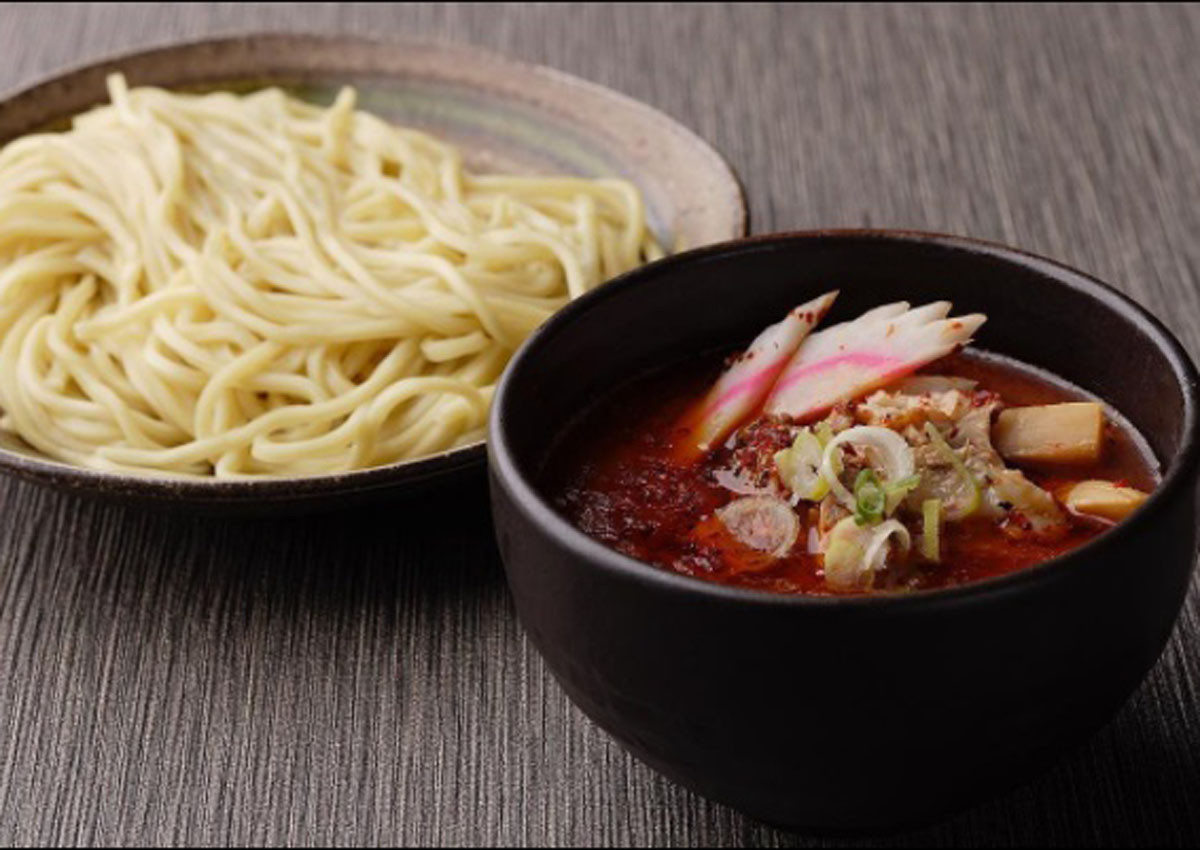What I discovered when I ate my way through Bhutan

One of my oldest memories of the joys of eating, of wanting to eat again and again, was when my grandmother sat me by her bench and painstakingly broke into a rui fish head to find the juiciest bits for a happy four-year-old me. There are other memories too. The smell of khejur er rosh being churned into caramel goodness as dadi stooped low over the mud stove, her wooden ladle going round and round, the sticky caramel coating the spoon, the smell burnt, heavy and wholesome.
The Proustian punch of eating food that stirs a nerve is something I have always been on a quest for. Since reading Johanna Spyri’s Heidi, I have longed to walk the Alps and sink my teeth into a loaf of bread and a big block of cheese, all to be downed with a glass of fresh milk.
And so it was during my travel to Bhutan, the small country nestled in the Himalayas, that I was jolted back into my wistful longing for a meal like that of Heidi’s.
The crisp mountain air in the Himalayan country is sharp even during May, when it is the height of summer back home in Dhaka, and it whets your appetite.
In the trip, I diligently jotted down places I wanted to try, foods I had to have, something that would make me write like Proust wrote about eating madeleines in Swann’s Way.
Hungry after a short 30-minute airplane ride from Dhaka, Naimul, Sakib, Tanni and I landed in Paro, and quickly made our way to the old farmhouse that would be our home for a good part of the stay.
Our host was kind and packed us a lunch of huge beef and cheese momos to take on our ride to Chele La Pass, the highest motor pass in the country. We also took along a flask full with piping hot tea made with milk.
All through the winding journey, the alpine forest loomed dark and ominous over our heads, the idea of the spicy momos a constant thought in me.
Finally on top, I took my first bite of the momo, and it was everything I had imagined and more. One bit and the drama begins. The oil trickled down my hand, the beef and finely diced onions, sweet and savoury against the red chilli dip.
Our hands were frozen, as the cold mountain wind blew down in the approaching dusk. We savoured the momos, one huge bite after the other, ending the feast with the sweet milk tea.
Back in Paro from the Chele La Pass, we grabbed coffee and butter cookies from one of the many new-style cafes that have sprung up all over the small Paro town square.
For dinner, at the farmhouse, nestled away from the city, we were served potatoes with cheese and chillies with cheese-Ema Datshi and Kewa Datshi-two of the most popular dishes in Bhutanese cuisine.
This was accompanied with bowls full of red rice, a staple in the Bhutanese diet.
A bite of the Ema Datshi and I knew I would be stumped for words to describe the taste to anyone who has never tried it.
Long green chillies slit all the way through, plump and mushy, coated in salty, rounded cheese, tingled all corners of my mouth. I took another bite to try and make sense of the flavour profile. The rice is nutty, chewy and full-bodied, a perfect balance against the spicy dish.
Over dinner, in the well-lit and spacious kitchen room, conversations flowed with Jojo, the grandfather of the house, and Pema, a local guide. Stories of tiger lairs and Buddhist monks dominated the night.
The next day we were to hike up to the famed Tiger’s Nest. Again I painstakingly packed my bag, with cheese, candied lemons, dried vegetable sausage, and some Kit Kats.
A hike up through the forested mountains and a cold rainy descent later, we were ready for our next food mission. Back in Paro town, we looked for a restaurant frequented by locals.
In the old part of the town, men played carom, powder rose up and mingled with the smoke of tea brewing. For our late lunch, we chose Sushila Restaurant, suggested by our taxi driver.
Piping hot plates of momos, both beef and cheese, along with plates of red rice and Shakam Paa (dried beef curry with radishes), Kewa Datshi, and Jasha Maroo (minced chicken curry) were served for lunch. The food was served with glasses of their local wine and ezay (basically any kind of Bhutanese chilli sauce).
I chose the Jasha Maroo, a spicy chicken stew cooked in Bhutanese style (of course with chillies, I knew by now)-a perfect complement to the stinging cold of the Himalayas. As we four talked and sipped the wine, I stole bites from everyone’s plates, the Shakam Paa my personal favourite of the stolen goods, the dried beef made to taste like beef jerky.
The food throughout West Bhutan remains unfalteringly similar. For breakfast, red rice fried with chillies and fried eggs. The Bhutanese also offer milk tea (chai) or suja (butter tea) plus a communal basket of puffed rice known as zaow for breakfast or if you happen to visit any household.
In our travels, we often missed regular lunches and instead snacked on products from roadside stores. The mountain fruits are sweet. When you tear into the small oranges, the paper peels off like skin easily. The orange broke off, spraying droplets that landed on my spectacles. The tiny oranges, flood your mouth, like a dam giving way to floodwaters. I ate a couple in one go.
For our last night in the Himalayan country, we were served fresh sugar snap beans stir-fried in oil with some fresh garlic and a homely take on Shakam Paa.
There are many meals and memories I brought back from my travels in the country. The warm eclairs and butter cookies I got during a bathroom break in the clouded Dochula Pass. The salty butter tea for the cold, rain-soaked evenings, and the unending dumplings.
Bhutanese food is little known outside of the country, but my appetite is whet and I want to explore more. Whether I got to live my dream of having Heidi’s meal is something I am still unsure of though. The little child in me will keep searching for that memory and in that quest hopefully eat through all the cheeses and breads among the mountains.
Published at Sun, 13 Aug 2017 10:00:00 +0000





